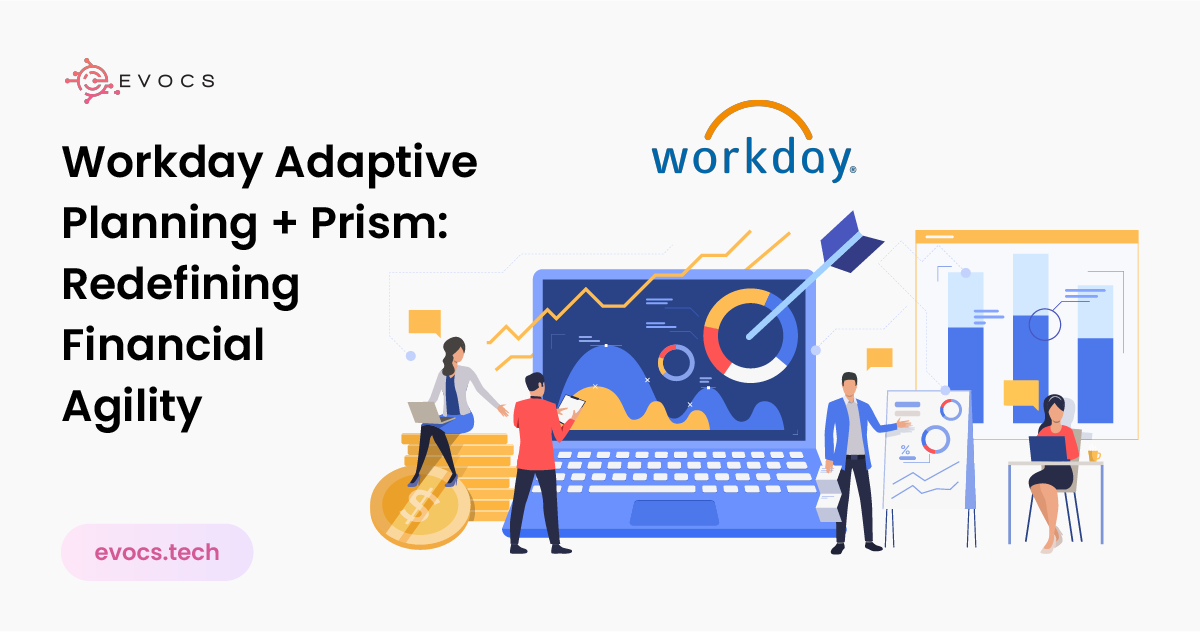
It cannot be denied that the finance and planning departments until now are more pressured than ever before. Today’s business landscape continues to transform at unprecedented rates: supply chain volatility, inflation, talent deficit, and regulations pose as the new reality. In this context, the conventional strategies are insufficient for planning.
Meet Workday Adaptive Planning—the only cloud solution for continuous planning built for departments of all sizes and types of work. When integrated with Workday Prism Analytics, the capabilities go over and above the business of financial prognostication. It shifts organizations from a reactive mode of summarizing, where the raw information is compiled after an event has occurred, to a proactive mode of decision-making using diverse, multiple forms of data. Together, they are setting a new benchmark for business flexibility and providing finance and operational managers with a plan, control, and measurement solution all in one.
Outsourcing the focus of how it works, we discuss how Adaptive Planning and Prism Analytics are effectively integrating to enable enterprises to receive new levels of financial efficiency, time-sensitive decisions, and a defensive edge.
The Challenge: Data Fragmentation and Planning Silos
A significant factor that causes planning cycles to fail in today’s organizations relates to data fragmentation. Other objectives of Business Intelligence include financial planning, and essentially, this is made possible through the use of ERP systems. Performance and activity information that inform supply chain activities, customer interactions, and inventory are stored elsewhere—in various bespoke databases, spreadsheets, or even in different software.
The result?
- Proposals are weak or founded on unproven theories, assumptions, or unknown requirements.
- The initial reason is that the teams cannot use the latest operational reality to update their models, leading to a rolling process.
- The management or decision-makers lose confidence in the data; as such, they take longer to react to new market opportunities or threats.
- The current high-speed economies mean that companies are running blind when planning and analytics are not properly integrated.
Workday Prism Analytics: Creating a Single Source of Truth
Workday Prism Analytics handles basic problems by collecting various data sources, while cleaning and enriching it before delivering native Workday access to the data.
Key strengths include:
- The tool enables seamless financial and operational data union.
- Organization-wide accessibility of self-service analytics lets both IT professionals, business employees, and finance personnel analyze operational performance data through flexible exploration methods.
- The analysis of data at both transaction-level along with customer-level and product-level enables better performance forecasting.
- The integration of Prism data into Adaptive Planning eliminates the practice of creating financial models from fixed historical records. These models reflect the current business operating patterns that occur at the present moment.
Building Dynamic, Driver-Based Models
Adaptive Planning drives effective driver-based modeling once it integrates operational metrics obtained from Prism.
Consider these examples:
- Retail and Wholesale businesses should adapt real-time point-of-sale data to develop store-based forecasts that determine inventory replenishment and labor requirement schedules.
- Healthcare Providers should connect their patient care numbers alongside treatment durations to their expense models alongside revenue predictions.
- Manufacturers can use the platform to estimate margin outcome changes resulting from supply chain interruptions coupled with raw material price fluctuations.
Through this multi-dimensional analysis, operational changes drive instantaneous changes across revenue results along with expenses and cash flow projections, which enables leaders to act quickly.
Real-World Impact: Faster, Smarter Decisions
Adaptive Planning together with Prism Analytics brings organizations significant performance benefits that show up as:
- A 40–60% abbreviation of the time required to close monthly books and update forecasts.
- Better capital allocation can result from precise scenario modeling processes due to improved modeling accuracy.
- Shared planning models within Adaptive Planning help finance teams interact together with sales teams and operations and HR teams to improve their work collaboration.
- The examination by Forrester found that Workday Adaptive Planning users experienced a 21% acceleration of their decision-making insight, while their competition lagged at least months behind.
Enabling Continuous Planning with Rolling Forecasts
Corporate planning is no longer an annual event like the annual business planning exercise. However, building rolling forecasts with the help of Prism-enhanced Adaptive Planning allows the following:
- These have to be updated monthly or quarterly at most and are populated with live data.
- Get the ability to perform ‘what-if’ analysis work at the height of its abilities so as to evaluate new business opportunities.
- Mitigate risks like a situation where the cost is more than estimated, or in the worst case, when revenue is not as expected.
This work guarantees that the rolling forecast is populated only with live, trusted data at every significant operational area such as workforce, customer, supplier, and assets.
Technical Architecture: How Adaptive and Prism Work Together
The integration with Adaptive Planning is to be as smooth with Prism as possible:
- Data Ingestion: Workday can be linked with other third-party ERPs, CRMs, HCMs, spreadsheets, or other custom databases.
- Data Preparation: Data cleansing, normalization, and joining are done within Prism.
- Data Delivery: Delivered datasets are integrated into Adaptive Planning sheets, models, and dashboards without the need for importing services.
- Any new operational data incorporated into the system results in real-time changes to the planning, modeling, and forecasting in Prism.
The idea of low/no-code can be translated to mean that the decision-making staff in finance and planning can update the data on their own without relying on lengthy IT processes, which is very appropriate for the modern fast-paced economy.
Best Practices for Successful Integration
The following are the best practices that should be adopted in organizations based on transformation scenarios:
- Start Small: You do not have to try to implement planning with all the datasets across the organization immediately, but choose one or two operational datasets that will cause the most significant difference to planning accuracy.
- Governance Solutions: Establish a governing structure that will help in the management of data, as well as its availability to only the relevant personnel.
- Self-Service: Encourage the various departments within the business to gain access to the information they need, with minimum reliance on the centralized BI teams.
- Get Early Stakeholder Involvement: Every forecast update process should be based on real-time availability of data at the time of the quarterly planning cycle.

